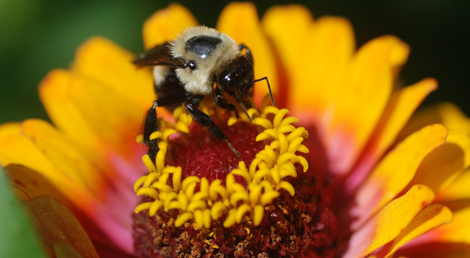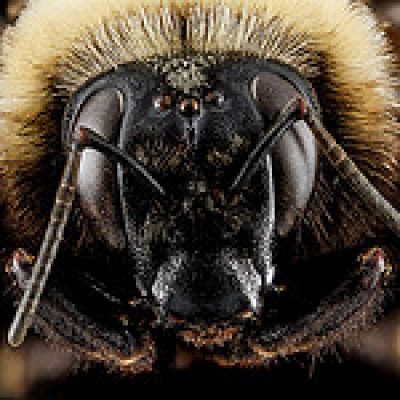
Great Pollinator Project
Without pollinators, most flowering plants could not reproduce. One-third of our food plants, from tomatoes and squash to apples and almonds, depend on the services of a pollinator. Bees are the most important pollinators in the northeastern U.S.—more than 225 bee species have been recorded in New York City alone. To learn more about pollination, watch the slide show, above.
The Great Pollinator Project was launched to learn more about bees and other pollinators in New York City and find ways to improve habitat for them. Rural farmers aren’t the only people who depend on the services of bees and other pollinators. City dwellers do, too. Most plants in community gardens, parks, and urban natural areas rely on bees to move pollen from flower to flower so that the plants can reproduce. Fortunately, because insect pollinators are tiny, there is much that can be done in urban environments to support them, even in small habitat patches.
On this site you can:
Learn more about native bees and other pollinators in New York City and beyond.
Find out how to grow a pollinator garden.
Find out how to volunteer in a citizen science pollinator project.
Read about the results of the Bee Watcher citizen science project.
If you are a land manager or gardener working for a city agency or other organization, you can use this site to find technical resources about pollinator conservation in the region.
Finally, if you are a teacher or parent, you’ll find links to useful programs and curricula about pollinators and their needs.
Pollinator Facts
- Studies indicate that bees account for 68 percent of visits to flowers in New York City parks and residential neighborhoods.
- After bees, the next most common visitors of flowers in the city are flies.
- Butterflies account for just 6 percent of New York City’s flower visitors.
- Honey bees pollinate approximately $15 billion worth of crops in the U.S. each year. The value of pollination services provided by native bees and other wildlife is even greater.
- Only 15 percent of the hundred or so crops that make up the world’s food supply are pollinated by domesticated honey bees. At least 80 percent are pollinated by wild bees and other wildlife.
- More than 100,000 different animal species — and perhaps as many as 200,000 — play a role in pollinating the planet’s flowering plants.
- Insects, including bees, wasps, moths, butterflies, flies, and beetles, are the most common pollinators, but as many as 1,500 species of birds, mammals, and other vertebrates also pollinate plants.
(Source: US Fish and Wildlife Service Pollinators Page)
Featured Resource
 Check out these close-up images of native bees and other insects from the USGS Bee Inventory and Monitoring Lab. They are freely available for use by all.
Check out these close-up images of native bees and other insects from the USGS Bee Inventory and Monitoring Lab. They are freely available for use by all.

